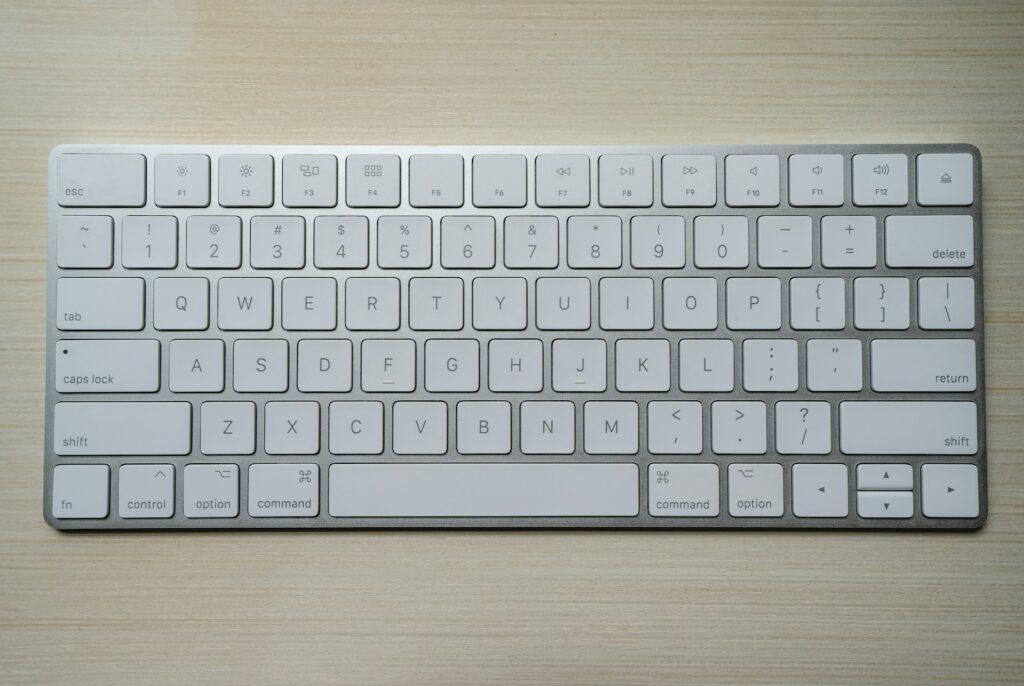This is the definitive guide to shortcut keys for Windows.

This is the definitive guide to shortcut keys for Windows.
When it comes to saving time on Windows, keyboard shortcuts are among the most effective tools available. The use of shortcut keys may greatly improve the speed and efficiency with which you do routine activities, whether you are accessing directories, managing several applications, or developing your workflow. This tutorial will teach you the most important shortcuts for Windows, ranging from the most fundamental procedures to the most complex capabilities, so that you may operate your personal computer more effectively and like a genuine power user.
The Importance of Shortcut Keys and Their Understanding
The usage of keyboard shortcuts has the effect of reducing the frequency of mouse movements. Using them, you may immediately execute orders, which saves you seconds that pile up over the course of time. As a result of mastering shortcuts, professionals, gamers, and students alike are able to enhance their ability to concentrate and have fewer disruptions in their workflow. In addition, they alleviate the strain that is caused by the frequent use of the mouse and make the keyboard-based control method accessible to those who prefer it.
Key shortcuts for the Windows operating system
There are a few shortcuts that are consistent throughout all versions of Windows and serve as the basis for effective computing.
You may copy by pressing Ctrl + C, paste by using Ctrl + V, and cut selected objects by pressing Ctrl + X. To undo your most recent action, use Ctrl and Z, and to redo it, press Ctrl and Y. Use the Ctrl key and the letter A to select everything on a page or in a folder.
In order to manage windows, you may switch between open applications rapidly by pressing Alt + Tab, and you can shut the present window by pressing Alt + F4. Combining Windows and D will minimize all windows and display the desktop. Pressing it again will bring them back to their original size.
Quickly Navigating Through the File Explorer
Shortcuts may make navigating in File Explorer, which is one of the most commonly used sections in Windows, less complicated and more efficient.
When you press Windows and E, File Explorer will launch immediately. The address bar may be focused by pressing Alt + D or Ctrl + L. Then, input a new directory path into the address bar. The combination of Ctrl, Shift, and N will create a new folder, and Alt + Enter will open the properties pane for any files or folders that have been chosen.
Pressing the F5 key will refresh the view you are now seeing, while pressing the F2 key will allow you to rename a file. By pressing Shift and Delete, you may permanently delete objects without sending them to the Recycle Bin. This occurs when you delete items.
Microsoft Windows and Virtual Desktops Administration
Snap Layouts and virtual desktops are two of the increased multitasking capabilities that were introduced with Windows 11.
To snap windows to various sections of the screen, use the Windows key in conjunction with the arrow keys. Combining Windows and Z will reveal the Snap Layout option, which allows for exact window arrangement. Windows + Ctrl + D allows you to create a new virtual desktop or move between existing ones. To switch between virtual desktops, use Windows + Ctrl + Left/Right Arrow. To close the desktop that is now active, press Windows + Ctrl + F4.
These shortcuts make multitasking far more efficient, particularly for users who are working on many projects or applications at the same time.
Shortcuts for the Taskbar and the Start Menu
Immediate access to pinned applications or system tools may be obtained with the use of the keyboard. To access the application that is pinned to your taskbar, press the Windows key and the number key (1–9) simultaneously. While Windows + T allows you to cycle between the programs on the taskbar, Windows + B concentrates on the region of the system tray.
If you want to open the Start Menu, you may do so by pressing the Windows Key alone. After that, you can start any application by typing its name into the Start Menu itself.
Screenshots and recordings of the screen are being taken.
A number of built-in methods are available in Windows for capturing what is shown on your screen. There is a full-screen screenshot that is copied to the clipboard by PrtScn. To launch Snip & Sketch, press Windows + Shift + S. This will enable you to choose a certain region of the screen. Just the active window is captured when you press Alt and PrtScn.
To quickly take a video of your screen, press the Windows key, the Alt key, and the R key simultaneously. This will open the Xbox Game Bar.
Obtaining Instant Access to Configurations and Tools
On the other hand, the shortcut Windows + I opens the Settings app instantly, and the shortcut Windows + R opens the Run menu, which allows you to automatically begin applications. When you press Windows and X together, the Power User Menu will appear. This menu provides you with rapid access to a variety of tools, including the Command Prompt and the Device Manager.
To ensure your privacy and safety when you leave your computer, you should always utilize the shortcut Windows + L to lock your computer immediately.
For a more expedient navigation of the web, browser shortcuts
The use of shortcuts may dramatically increase the pace at which you go over the internet. Ctrl + T will launch a new tab, Ctrl + W will shut the tab that is now open, and Ctrl + Shift + T will reopen the tab that was closed on the previous occasion. While Ctrl + Tab allows you to navigate among open tabs, Ctrl + L illuminates the address bar, allowing you to enter URLs more quickly.
Pressing Ctrl + Plus (+) or Ctrl + Minus (-) will zoom in or out, and pressing F5 will reload the page you are now viewing.
Editing of text and management of documents
By using text shortcuts, writing and editing may be made more efficient. The combination of Ctrl and Backspace deletes full words at once, but the combination of Ctrl and Arrow Keys allows you to fast navigate between words. Text may be selected without the use of the mouse by using Shift and the Arrow Keys. To save your progress, press Ctrl and S regularly.
When using programs such as Word, pressing Ctrl and P will launch the print window, and pressing Ctrl and F will search inside a document.
Shortcuts for Accessibility and Increased Utility
The Windows operating system comes with a number of shortcuts that enhance accessibility and control of the system. The Accessibility settings may be accessed by pressing Windows + U, Magnifier can be launched by pressing Windows + Plus (+), and Narrator can be activated by pressing Windows + Enter. Combining Windows and Esc will immediately quit Magnifier.
Users who depend on voice control or settings with a high contrast ratio will find that these shortcuts enable instant access to those tools that are crucial to their work.
Keyboard shortcuts for command and control
The command-line interface is often preferred by power users. Pressing Windows and X together will open the Quick Access menu, from which you may choose either the Command Prompt, PowerShell, or Terminal. It is possible to execute some commands or apps with administrator rights by pressing Ctrl + Shift + Enter.
Convenience shortcuts for system control and troubleshooting
When it comes to troubleshooting or gaining rapid access to essential services, some shortcuts are helpful. The Task Manager, which displays the tasks that are now executing and the performance of the system, may be opened by pressing Ctrl + Shift + Esc. When you press Windows and Pause/Break, System Properties will appear immediately. If your display becomes momentarily unresponsive, you may restart your graphics driver by pressing Windows, Ctrl, Shift, and B simultaneously.
Quick Access to the Clipboard and History
When it comes to Windows, the clipboard is more complex than most people know. The shortcut Windows + V opens the clipboard history, which enables you to paste objects that you have already copied. If you want to improve your efficiency when multitasking, you may activate it by going to Settings, then System, and then Clipboard.
Shortcuts for the Management of Files and Folders
The use of shortcuts may save a substantial amount of time when working with huge groups of files. You may launch a new window in File Explorer by pressing Ctrl + N, and you can navigate to the parent folder by using Alt + Up Arrow. Each folder in the navigation pane may be expanded by pressing Ctrl + Shift + E, and the preview pane can be turned on or off by pressing Alt + P.
Shortcuts for Sleeping, Restarting, and Shutting Down
Pressing Alt and F4 on the desktop will allow you to swiftly adjust power choices. From the menu that appears, choose either Sleep, Restart, or Shut down. The alternative is to use Ctrl + Alt + Delete, which will allow you to access several security settings like as the Task Manager and Sign Out.
Ability to Personalize Your Own Shortcut Keys
Your preferred apps might have their own unique shortcuts that you can customize. Select Properties from the context menu that appears when you right-click a shortcut on the desktop, and then select the box that is located next to “Shortcut key.” You may activate it by pressing the key combination of your choice, then clicking the Apply button. This is a fantastic method for launching applications that are often used with only the touch of a single key.
Understanding how to use the shortcut keys in Windows can completely change the way you interact with your computer. Immediately after you begin using them on a consistent basis, you will realize that your workflow gets substantially smoother, quicker, and more accurate. Although it could take some time to commit them to memory, with regular practice, you will eventually find that these shortcuts become second nature. By being familiar with the appropriate keys, Windows may be transformed into a far more powerful and effective environment, regardless of whether you are managing files, editing papers, or moving between desktops.




